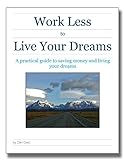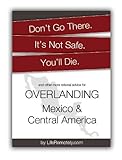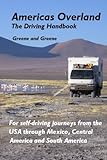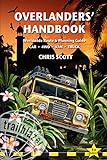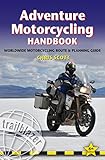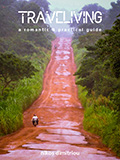Overland Peru Travel
Pan American Highway > Peru
Currency to display:
Contents
- 1 Visiting Peru
- 2 Entering Peru with a Car or Motorbike
- 3 Driving in Peru
- 4 Gas and Diesel price in Peru
- 5 Safety and Security Considerations
- 6 Camping in Peru
- 7 Navigation
- 8 Special Overland Travel interests
- 9 Vehicle Maintenance
- 10 Buy or sell a car or motorbike in Peru
- 11 References
- 12 Helpful External links
Visiting Peru[edit]
Give a brief overview of what it's like to visit. How easy is the border, how safe is the country, are there great things to see and do, etc.
Entering Peru with a Car or Motorbike[edit]
Correct as of: September 2013
Required Paperwork[edit]
(To check if you need a travel Visa for Peru, application instructions and fees see: Peru Visa online application at VisaHQ.com)
- Passport of registered owner (original and 1 copy).
- Drivers license of registered owner (original and 1 copy).
- Vehicle registration (original and 1 copy).
Process at border[edit]
- The owner of the vehicle gains entry at immigration (migración), by getting a tourist card, getting it stamped by the police and finally a stamp in their Passport.
- The owner must show the new passport stamp, drivers license and the original vehicle registration to customs (aduana).
- The owner is issued a temporary import permit for the vehicle.
- If you cross at Tumbes, Ecuador and Peru are working together at their borderpost. Exiting the country happens some kilometers over the boarder along an empty stretch of highway. For leaving Ecuador you go on over the boarder (5K) until you see the CEBAF borderpost (a big walled compound) at the right (with a big peruvian flag). The ecuador immigration and aduana are next to their peruvian "friends" in the very same office. The Tumbes border was safe and we saw no corruption.
Exiting Peru into Ecuador you use the other CEBAF borderpost some K into Ecuador.
Cost of entry[edit]
Free.
Permitted length of stay[edit]
The official at the border is allowed to give people up to 183 days per calendar year! Most people are issued 90 days.
Your passport should be valid for the duration of your stay in Peru.
Note: If you enter Peru without an entry stamp then you’re required by law to apply for a new entry stamp at the nearest immigration office; the immigration authorities will need you to provide your passport and evidence of your entry to Peru, eg air or bus ticket and exit stamp from the last country you visited.
Extension of stay[edit]
Cannot be extended from within the country. But you can leave Peru to a neighboring county, spend one night there and then drive your vehicle back to Peru. They'll give you another 90 days: http://www.sunat.gob.pe/orientacionaduanera/internamientovehiculos/index.html (I've done this myself.)
As of 2014 there is a new limit of 180 days in Peru per 12 months for people. The fine for overstaying is only $1.00 USD per day, but if your vehicle overstays it's permit, it could very well be confiscated and you'll never get it back.
Storing a vehicle and temporarily leaving the country[edit]
The temporary import permit can be "suspended" indefinitely while you leave the country. One person explains their experience as follows:
El TiP VIAJERO: Urban Camping, Airbnb, Hostel and Storage, located in Lima, Peru, 10 minutes from the International Airport, 5 minutes from the Pan-American Highway North, and 15 minutes from the historic center, they carry out the process of suspension of temporary entry CIT / TIP of vehicles for the purposes of tourism, the owner is a specialized lawyer and has carried out several suspensions quickly, with coordination with CUSTOMS, SUNAT, the camping area is also a vehicle storage area, The parking is in a covered and closed area, very safe, with the permanent care of the owners, in that space vehicles of up to 3 can be stored. 3 meters 10 cm high and 2 meters and 50 centimeters wide, the area is 17 meters long, it is important to do it now with a specialized lawyer since the process can be long with the required verifications. You can contact them at Whatsapp +51941483585, the storage area, the campsite are listed on Ioverlander with many recommendations, more information at https://www.eltipviajero.com , google maps: [1]
It's possible to store vehicles in Cusco at La Quinta Camping. The process is as follows, get to the Duana downtown (Cusco) apply for a suspension, the customs and/or Policia Nacional will come to the campground to make sure the vehicle is there. Milagros the manager of the campground will sign a paper that the vehicle will not get moved for the period of time you apply for the importacion temporal being suspended. That's it. You'll fly or bus from Cusco to Lima and off you go. As I understood from them the process took about 48 hours to be completed.
Storage at La Quinta is S/.12.00 PEN for 24 hours.
This is possible anywhere in Peru and works as follows:
1) You enter the country with your vehicle and get an importation permit of 90 days for it.
2) You go to the local "aduana" (SUNAT) and ask for the permission to leave the country without your vehicle. You will need to give them the address of the place where you leave it and probably a declaration of the owner of that place saying that the vehicle will not be (re-)moved (see above).
3) You can then leave the country without it, BUT you will still need to drive it out of Peru before the 90 days of temporary importation expire.
4) If you want to leave the country for a longer period (no limit in the peruvian law) you have to suspend your Temporary import:
- find a save place
- go to nearest police office
- let the police make an official declaration "car will not move" signed by the owner of the save place
- go to banco national and pay 7,9 sol
- go to police to collect declaration
- go to Sunat aduana let them send your application to borderpost where you entered the country (with a lot of copy's of all your paperwork)
- leave the country and wait for email to confirm your suspension
- on return go to Sunat with an application de levante de suspension and without your car
- Sunat might control the car is still on the same place
- Sunat gives a new entry form indicating the number of days that are left to leave the country
For the legal regulations see http://www.sunat.gob.pe/orientacionaduanera/internamientovehiculos/index.html as well as http://www.sunat.gob.pe/legislacion/procedim/despacho/especiales/vehiculos/procGeneral/inta-pg.16.htm (in Spanish).
Also see How to suspend a vehicle permit in Lima, Peru for a first-hand write-up of how it's done from December 2013; and http://nonurbia.com/project/suspending-the-car-permit-in-peru/ for a complete write-up including sample letters from 2015.
If you use the Puno Aduana office, ask for Giovanna. She speaks excellent English and is very helpful.
You can also store with Swiss Wasi in Zorritos near Tumbes/by the Ecuadorian border. They're a nice Swiss/Peruvian couple and speak French and Spanish. Leon of Casa Grillo in Zorritos stored our car for 6 months. Their info is on ioverlander.
Exiting with a vehicle[edit]
- The registered owner must get the Police at the border to stamp their tourist card, clearing them to leave Peru.
- The registered owner can then be stamped out of Peru at immigration.
- The registered owner presents the temporary import paper to customs.
Driving in Peru[edit]
Recommended books for Overlanding in Peru[edit]
Travel insurance for Peru[edit]
World Nomads offer the most flexible Travel Insurance at the best prices for multi-country / multi-year trips. You can buy, extend and claim online, even after you've left home.
Vehicle insurance requirements[edit]
We bought SOAT in Jaen also at 'la Positiva'. They filled out the form by hand (because they have no information in their computer system on how to insure foreigners here). For 3 months we paid for category N1 (4x4) S/.165.00 PEN. The office is here: S5.71368 W78.80884 Be prepared, people here work slowly and it literally takes HOURS to make it!
Insurance is mandatory in Peru, however it's difficult to purchase because the vehicle will not be in the Peruvian computer system. Many people simply show the police SOAT insurance (Seguro Obligatorio Automóviles Transito) from another country (i.e. Ecuador or Colombia)
We bought SOAT in Jaen also at 'la Positiva'. They filled out the form by hand (because they have no information in their computer system on how to insure foreigners here). For 3 months we paid for category N1 (4x4) S/.165.00 PEN. The office is here: S5.71368 W78.80884
Be prepared, people here work slow and it literally takes HOURS to make it!
Showing SOAT or other 3rd Party Insurance papers from another country is not advisable though. When you get stopped by the police, you'll be in trouble (you might get away with it - as I did - but it's awkward) - they are not stupid and can read Spanish quite well... So they'll easily know if your SOAT is from Peru or from somewhere else.
The fine for not having SOAT is about the same amount that you'd pay for one year of insurance, at least for motorbikes. Also, given the fact that Peruvian drivers are probably the craziest in South America (my own experience), you really want to have an insurance. Beyond that, people in Peru cross roads and even motorways without properly watching out for vehicles (also my own experience), and if you hit somebody, you're in even bigger and very serious trouble.
After having checked with several Peruvian insurance companies, "La Positiva" was the only one that would give me a shorter insurance period than one entire year: I got 8 months for a motorbike (650cc) for $111.00 USD in 2013 which I extended by one month (for around $35.00 USD). Motorbike insurance for a year (as of 2013) would cost from S/.550.00 PEN (if you buy it in Lima from "La Positiva") up to S/.700.00 PEN (from "Pacifico"). If you buy it in the provinces, you might get it cheaper, but make sure you get an insurance that's valid in the entire country, not just in the given province.
Cost of vehicle insurance[edit]
$24.00 USD for 3 months for a 4x4.
Where to purchase vehicle insurance[edit]
If you cross the border from Ecuador at Tumbes, insurance can be purchased in the parking lot of the migracion / aduana. Update Aug 2017: insurance is sold inside the building where you get your vehicle's temporary import permit. S/20 for 3 months for a truck camper.
The La Balza border from Ecuador to Peru (south of Vilcabamba) is small and therefore, you wont find anywhere to buy insurance. In Jaen or even in Cajamarca, you can go to La Positiva or MAPFRE agencies & buy an insurance for your foreign registered vehicle.
September 2017: 60 soles for one month for a Toyota campervan. It is 240 soles for 10 months. If you drive a camper van like VW T3-T4-T5, or a Fiat Ducato, or a Chevy/ Dodge van, you can register your van as a "panel van" so the agent knows exactly what category/class to put your vehicle. Apparently they dont have campervan category. We bought ours in Cajamarca. They need your registration (or title), passport & CIP (the customs document you get). You can also pay by credit/ debit card. Address: Dos de Mayo 352, a few min away from the central plaza of Cajamarca (no parking outside).
Check here: https://www.lapositiva.com.pe/wps/webcorporativa/principal/seguros/oficinas-y-agencias/1093/c-1093
November 2023: A few companies offer purchasing SOAT online for foreigners. SOAT Express has been reliable and the monthly motorcycle insurance is 25% cheaper than the one purchased from the La Positiva border office. It is also one of a few companies to offer weekly policies. The process was super easy via Whatsapp and took less than 5 minutes, whereas La Positiva took about half an hour. The insurance policy lists La Positiva as the insurer.
There is also the much more established Interseguro but it doesn't let you pick motorcycle as a vehicle class, despite advertising for moto SOAT insurance.
Driving license[edit]
Technically an International Driving Permit is required.
In reality, showing a license from anywhere in the world seems to be good enough.
You can use your country of resident driving license for 6 months. The police can look for your date of entry from the passport immigration stamp. They might argue that only 3 months are permitted. It depends on the policeman and why you were stopped in the first place. If they catch you out you'll need to pay the price.
Driving side of road[edit]
Right.
Right hand drive vehicles are permitted without problem.
Mandatory items in vehicle[edit]
On the OUTSIDE of the vehicle, you are required to stick some red/white reflectors; most local cars and TukTuks have them. There are special 'stickershops' where you can buy different designs. These reflectors are for vehicles used for business or commercial reasons. You don't need them for private vehicles as you'll see from the cars without them. You are required to carry the vehicle documents at all times. Also you require the standard items such as triangle, fire extinguisher and first aid kit. The police can check and if they catch you, you will have to pay a fine. See bribes.
Roads[edit]
General Road quality[edit]
Roads in Peru vary greatly. Major highways are often paved and very good quality. Lesser roads are gravel and vary from good to horrendous. If you choose a back-road through the mountains, be prepared for extremely narrow, windy, bumpy, dusty gravel tracks.
More updates & info can be found on the official Peru Transportation Ministry: http://www.mtc.gob.pe/emergencia_vial/emergenciavial.html
Road signs[edit]
Road signs do exist, but are far from common. Most towns have at least one sign stating the name of the town and distances to the next towns. Road hazards are often un-signed.
Toll roads[edit]
Tolls are very common on the coastal road and very uncommon in the rest of the country, and are infrequent when found on some highways. Sometimes only northbound traffic must pay a toll. Expect to pay something like USD $2-3 for at least 100km.
- No tolls are required for motorcycles. For bigger toll stations, keep far right (right of the truck line-ups) and there will be a small lane to pass.
Bribery in Peru[edit]
The policemen salary was increased in 2014 which does not solve the bribery problem but probably does help to prevent the majority of it.
It is mandatory to put on headlights on all main roads, be careful to put them on, police will stop you for not having them on. The official fine is S/.300.00 PEN Soles for not having it on when required.
Wages may have increased but bribery is very common. You will be stopped and if all is not correct you can be threatened with an official fine and a trip to the police station. If you prefer to bribe don't stress and pay too much. Usually S/. 20 is enough. The police know when there is money about, Peruvians are paid double wages in July and Xmas and stops by police increase at these times. As an addition, road robberies increase too.
See the bribery tips page for advice.
Checkpoints[edit]
Police checkpoints are common in Peru. You will be asked to present your Passport, Vehicle registration, drivers license and the temporary import permit you were issued at the border. Make sure your lights are on.
Traveling with pets[edit]
Traveling with pets in Peru is not problematic. At the border nobody really cares about pets.
There are lots of stray dogs in Peru. Many times in bad condition and with diseases. Special care must be taken to keep your pet immune.
Special care must be also taken when traveling in warmer regions - as in all south America, there is risk of the heart worm.
People usually do fear dogs to some extent and will keep distance to your dog, especially if it's on a leash, since they consider such dogs as "aggressive dogs".
Dog food can be found in all bigger stores at different quality and prices. Bigger veterinarians also carry special dog food.
More infos can be found here
Gas and Diesel price in Peru[edit]
Last updated: March 2016/(October 2017 for diesel)
Currency and unit to display:
| Gasoline Grade | Price |
|---|---|
| Regular (84) | S/.9.40 PEN per Gallon (US) |
| Super (90) | $3.45 USD per Gallon (US) |
| Premium (95) (rare) | S/.15.60 PEN per Gallon (US) |
| Ultra (97) (rare) | ?? |
| Normal Diesel (Biodiesel B5) | S/.12.40 PEN per Gallon (US) |
| Diesel (low sulfur) | ?? |
Gas and Diesel / Frequency[edit]
Purchasing gas in Peru is not commonly a problem.
Typically gas stations are not more than 200 - 300km apart.
Diesel they sell is by law Biodiesel of 5% concentration (or DB5). Some REPSOL stations they advertise low sulphur diesel of 50ppm (or S50).
Gas and Diesel Quality[edit]
Gasoline purchased from name-brand outlets (ie. PetroPeru, Repsol) is regarded as better quality than a "no name" mechanic (grifo), although there are only 2 refinery companies in Peru: PetroPeru and Repsol. So theoretically all other grifos have to get their fuel from them. According to locals advice, PRIMAX has the best quality of diesel.
Safety and Security Considerations[edit]
Driving at night[edit]
Driving at night is generally not recommended, though might be OK on the larger highways.
- Poor road quality means potholes and obstacles are common.
- Dangerous driving such as tailgating, overtaking around blind corners and excessive speeding are very, very common.
- There can be many objects on and around the road that are nearly impossible to see at night, such as livestock, people, slow moving carts, cars with no lights, etc.
Vehicle parking[edit]
Parking vehicles on the street in smaller towns during the day is typically OK. Find a secure parking lot in big cities and at night. May 2016, Trujillo: Vehicle contents robbed while parked on a busy street near central plaza. Locks punched out. Came upon incident, one of the three robber pulled a gun and told me to leave. Tuffy center console box survived.
Special driving considerations[edit]
Drivers in Peru are particularly crazy, which leads to some very dangerous driving conditions. There have been many horrific accidents in recent years (some involving Overlanders) due to large trucks and buses taking hairpin corners in the wrong lane. Sound your horn loudly when approaching any sharp corners on mountainous roads.
Don't be afraid to give a couple of short taps on your horn in heavy traffic, it's not impolite, and lets other drivers know where you are.
Drive with your headlights on at all times, it's the law! Some people have been fined for not doing so.
Bigger vehicles also need reflector tapes around the car by law. Police might try to fine you if you don't have them.
Peruvians need an expensive, special permit for tinted windows. Get a "declaracion jurada" at the border for your tinted windows (for free! He will write it on your SUNAT import papers) to avoid later any problems with the police.
Security advisories and information[edit]
- Country Specific Information - U.S. Department of State
- Travel Reports and Warnings - Foreign Affairs and International Trade Canada
- Travel advice by country - Foreign and Commonwealth office (U.K.)
- Travel Advice for Peru - Australian Department of Foreign Affairs and Trade
Camping in Peru[edit]
URBAN CAMPING - Established Campground:
LIMA Camping Overlander and Airbnb EL TIP VIAJERO LIMA PERU (City of Lima, 10 minutes near International Airport Jorge Chavez) at [2] - This is one of the first urban campsite and RV PARK in Lima City, and only with Storage, Camping and Airbnb Rooms and appartments, made for a peruvian family travel, speak English, the facilities are new, power outlets, fast internet 80 mb per second, hot water showers all day, parking lot where you can park a motorhome of maximum 14 meters long /2.45 meters wide/3.09 meters height, Water and bathroom and hot showers for travelers and drainage for the motorhome. You can spend the night in the motorhome or leave it while you travel, it is 10 minutes drive from the International Airport Jorge Chávez, you can find many good Checks Ins in Ioverlander too: [3] GPS: -12.015679621591055, -77.07639982531427 (Alt.: 6) Whatsapp +51941483585
CAMPING OVERLANDER:
PIURA - COLAN BEACH CONZULADO 96 CAMPING OVERLANDER AND ROOMS : [4] ALSO ROOMS, POOL, AND bbq BEACHSIDE, HOUSE
TUMBES BOCAPAN BEACH CAMPING MARACUYA: [5] BEACHSIDE, SAND AND BEACH
PUCALLPA - UCAYALI- JUNGLE CAMPING WAYLLU: [6], NEAR yARINACOCHA LAKE
AREQUIPA- COTAHUASI: COTAHUASI CANYON CAMPING AREQUIPA: [7]
Camping is not common or popular with local Peruvians, though many hostels in touristy areas have camping to cater for backpackers.
Prices for camping at hostels fluctuates with the tourist seasons - check a backpacker guide book.
There are many excellent sites for roadside camping around the Cordillera Blanca in central Peru.
Many bloggers list and map their campsites. See section on GPS co-ordinates and camping lists, below.
Camping guide books[edit]
No specific book exists, though the usual backpacker guide books mention when a hostel or park has camping facilities.
Drinking water[edit]
Tap water in Peru is not safe to drink. Every corner store sells 1 and 2 liter bottles, and 20 liter bottles can be bought at most large grocery stores.
[edit]
Paper maps[edit]
Reise Know-How are amoung the best paper maps. Purchase paper maps before arriving in Peru
Maps of Peru are difficult to find, and road conditions change daily. Purchase maps before arriving in Peru.
GPS Maps of Peru[edit]
- Perut (Peru Ruteable): A community map project like OSM with excellent coverage for Garmin[1]
- Open Street Map: Appears to have good coverage.[2]
- Garmin: No map of Peru.[3]
- TomTom: No map of Peru. [4]
GPS co-ordinates for camping, propane, gas, repairs, etc. in Peru[edit]
- iOverlander is a website and iPhone application designed by Overlanders, for Overlanders. It contains GPS co-ordinates and reviews for camping, hotels, propane, water, mechanics, borders and much more.
- Seventeen By Six camping maps - Detailed list of campsites on Googlemaps; also available to download as a Word doc.
- Camping Sites: Peru - Detailed list of campsites and propane filling with description, directions and GPS co-ordinates. Some at hotels (lists facilities and price), some roadside and free.
- Campsite Listing - South America | PanAm Notes - List of campsites, with directions and GPS co-ordinates. Some at hotels (lists facilities and price), some roadside and free.
- Andes Expedition camping Locations - List of campsites, with basic directions and GPS co-ordinates. Mostly free sites.
- Camping Log 2: South America - List of campsites, shopping, fuel, propane and border crossings with excellent descriptions and GPS co-ordinates.
- Hackney Travel SA Waypoints - Raw GPS data (in gdb or gpx format) for waypoints (including campsites, fuel, repairs, propane and more)
- The Silk Road Motocaravan Network - Raw GPS data for waypoints (camping, gas, propane, points of interest and more)
- Landcruising Adventure – Some 50 GPS Waypoints on Accommodation & Campsites & Rough Camps.
- El TIP VIAJERO – Detailed information, how to get to know Peru, routes, GPS points, campsites, how to go to Machu Pichu, maps with information on tourist places in Lima, prepared by El Tip Viajero, Camping overlander and Airbnb near the Lima Peru airport and 5 minutes from The pan-american highway, also in Tumbes, Piura, Cusco and Pucallpa, They carry out the CIT TIP suspension process in Peru
Special Overland Travel interests[edit]
- Machu Picchu - It's not possible to drive all the way to Machu Picchu, but you can get pretty close and save yourself a lot of money by not catching the train. From the Cuzco area, drive through The Sacred Valley, passing Pisac, Ollantaytambo, Santa Maria and finally along a very narrow little track to the village of Santa Teresa. The last section of road is very narrow and windy, and requires a high-clearance vehicle. In Santa Teresa you can camp and safely leave your vehicle at the Inka Tour Hospedaje - the only campground in town. Since 2014, it's possible to drive to and park at Hydroelectrica. Parking is S/.10.00 PEN and camping is S/.15.00 PEN. From Hydroelectrica you can hike or catch the trail to Aguas Caliente, the town at the base of Machu Picchu. [5].
- Camping at La Quinta Camping in Cusco - A favorite of many Overlanders, this is a fantastic place to meet others, and unwind while being close to the city center with WiFi, hot showers, etc.
- Camping at Casa Lena B&B - camping in Curahuasi (2h from Cusco) - Casa Lena has a beautiful camping terrain with a magnificent view into the valley. You can set up your own tent but, for the light travelers, it is also possible to rent one of our Casa Lena tents. In the main building, bathrooms and hot showers are available 24/7. For people who prefer a little more luxury, Casa Lena can also offer you a good night sleep in one of our 5 single rooms, 2 shared rooms or in our master bedroom with bathroom. A number of facilities are available during your stay on our grounds: A barbeque spot, a chill out zone with hammocks, volleyball and football field, a shop with basic amenities, laundry service and electricity from 6 pm until half past 9 pm, and free WiFi. A fully catered breakfast with home-made products is included for our Bed & Breakfast guests but can also be prepared for our campers on demand. This delicious breakfast is served with home-made bread and jam, fresh eggs from our own Casa Lena chickens and even with home-made cheese (when available). Next to lodging, Casa Lena also offers tours. From hiking to horseback riding, from quiet boating trips to real adrenaline boosts, from day-trips to fully catered overnight camping trips.
- Camping Guadalupe in Caraz (north of Huaraz, in Cordillera Blanca) - This is one of the best campsites we have stayed after 5 years in Africa and the Americas. The setup is excellent, the facilities are new, all grassy area, potable water, free power outlets, fast internet (they are about to install optic fiber as well), hot water all day and the owner (Jaime) is very helpful. Highly recommended. Plus, it is 2 hours drive from the famous Lago Paron. GPS: -9.055058, -77.795009 (Alt.: 2229)
- Camping Overlander and Airbnb EL TIP VIAJERO LIMA PERU (City of Lima, 10 minutes near International Airport Jorge Chavez) at [8] - This is one of the first campsite and RV PARK in Lima City, and only with Storage, Camping and Airbnb Rooms and appartments, made for a peruvian family travel, speak English, the facilities are new, power outlets, fast internet 80 mb per second, hot water showers all day, parking lot where you can park a motorhome of maximum 14 meters long /2.45 meters wide/3.09 meters height, Water and bathroom and hot showers for travelers and drainage for the motorhome. You can spend the night in the motorhome or leave it while you travel, also offers tours across Pucallpa, Ucayali, Perú [9]. and the owner (John) is very helpful with Information about travel across Perú, Hes a Lawyer. it is 10 minutes drive from the International Airport Jorge Chávez, you can find many good Checks Ins in Ioverlander too: [10] GPS: -12.015679621591055, -77.07639982531427 (Alt.: 6) Whatsapp +51941483585
Vehicle Maintenance[edit]
Dealers[edit]
4x4s / Trucks
- Toyota Global Dealer Locator
- Land Rover International Dealer Locator
- Mercedes Benz International (select country on bottom right)
- Jeep International site locator
Motorbikes
Local Garages[edit]
Add known good mechanics here.
- Landcruising Adventure – Need a Workshop? Check out Fire Wheels in Lima
Buy or sell a car or motorbike in Peru[edit]
Buy
A foreigner can buy and register a Peruvian vehicle and drive it outside Peru. An export fee of $300.00 USD will be charged to any foreigner removing a Peru registered vehicle from the country.
Sell
Unknown.
A foreigner can sell a car in Peru. This car must be no older that 5 years for gasoline engines and 2 years for diesel engines; also cars over 35 years may be sold as "Classics".
References[edit]
- ↑ Peru Ruteable (English page)
- ↑ OpenStreetMap Peru
- ↑ Garmin coverage map
- ↑ TomTom Map availability
- ↑ Machu Picchu - The Road Chose Me
Helpful External links[edit]
- Landcruising Adventure – Travel Information Page on Peru: Money Matters, Budget & Expenditures, Documentation, Diesel & Gas Stations, etc.
- Peru: Visa and Passport requirements | World Travel Guide
- Health Information for Travelers to Peru - Center for Disease Control and Prevention
- Peru travel guides at wikivoyage
- Peru - Wikipedia, the free encyclopedia

